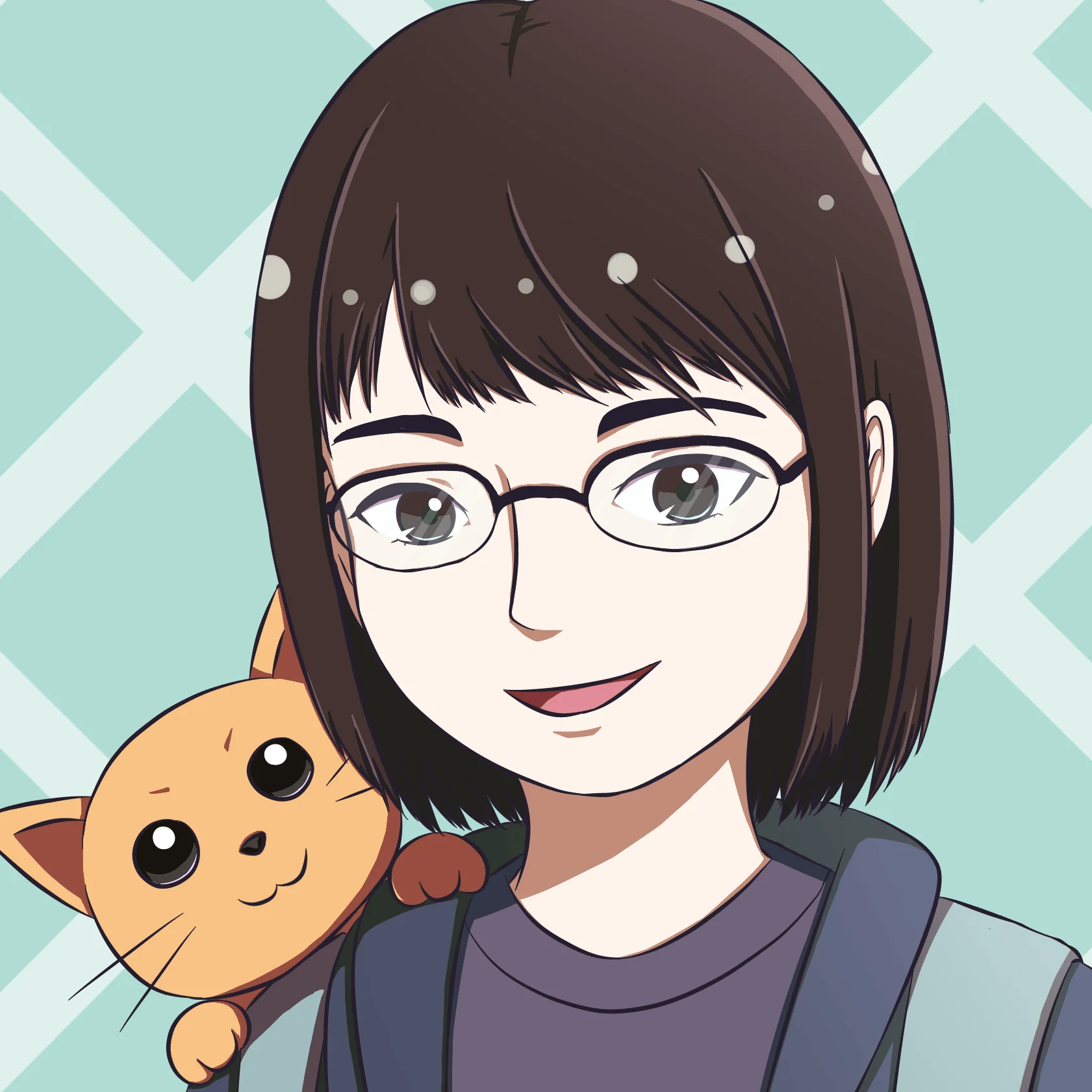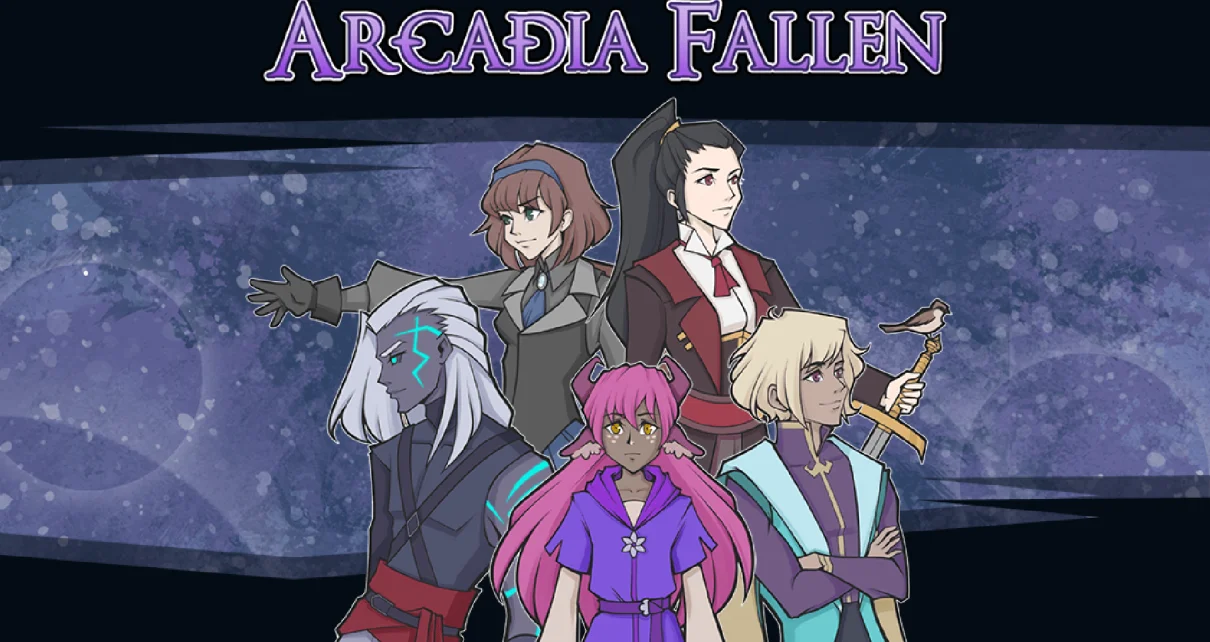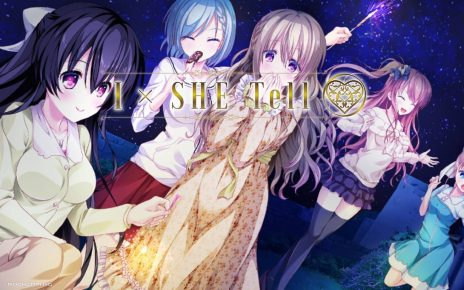Set in a fantasy world where alchemists, spirits, and mages exist, Arcadia Fallen is an Original English Language Visual Novel (OELVN) by Galdra Studios. It brings players on an 8 to 11-hour adventure where they will be tackling malicious demons, moral decisions, and logic puzzles.
Arcadia Fallen was successfully funded through its Kickstarter campaign in 2020 and this indie visual novel was released for PC on 17 November 2021. The Switch version is slated for release in January 2022.
In Arcadia Fallen, players play as an alchemist apprentice who is living a low-key life with their teacher at an alchemy shop situated within Anemone Valley, a mining town. Like many grand adventures, the protagonist is led onto a heroic journey after a series of life-changing events, where they will meet foes and allies (including four potential lovers) along the way. Using these base ingredients for their debut game, has Galdra Studios concocted a savory tale or a charred misadventure?
An Enchanting Opening
Let’s start from the beginning that has certainly caught my attention immediately with its dreamlike atmosphere, succinct narration, and smooth walkthrough of the character creation process. The execution of this portion is pretty brilliant, with the player being welcomed to a storytelling session where the storyteller queries them about who they are. The storyteller first asks for a name, which defaults to “Morgan” if nothing is input. Then, players will design their player character, the protagonist, from a library of pre-made appearances.

Not unexpectedly, Arcadia Fallen’s simple character creation system is easy to use but does not offer much freedom of customization. There are three main looks to choose from, namely feminine, masculine, and androgynous. Each look has its own fixed outfit and a selection of two hairstyles. Mixing and matching is not supported, so one cannot have a hairstyle designed for the androgynous look to be paired with the masculine look, for example. Colors may be picked for the protagonist’s hair, shirt, skin, and eyes, though they come in sets of 15 to 20 fixed colors. There are also three sets of pronouns (she/her, he/him, they/them) and two voices to choose from.
Despite the apparent limitations, what is offered by this character creation system is relatively generous for a visual novel. Furthermore, players can access the character customization screen at any point during the game to change any aspect of the protagonist, including the name, pronouns, and voice. Although there are no proper CGs in Arcadia Fallen, the player character is still shown almost all the time as a regular sprite, speaker’s portrait, or part of the mini scene illustrations. And what an absolute surprise it is to see the custom protagonist included at the start of the opening video!
Writing: A General Look
Once the protagonist is created, players are promptly ushered into the story proper. Arcadia Fallen tells a tale that is essentially a fantasy adventure sprinkled with slice-of-life moments and mysteries to be solved along the way. From the prologue to the epilogue, the writing is clear in its direction and in spite of the several twists and turns of events, stays true to the primary goals of the overarching plot introduced at the start of the game. As far as the story is concerned, it is focused and whole without glaring loose ends. I find it satisfying to follow our protagonist’s journey the entire way to seek answers to the various questions posed.

Every chapter in Arcadia Fallen is dedicated to a significant plot event, and the chapters are arranged in a logical, chronological manner. What’s missing, at least to me, is a compelling hook. The story creates a consistent ebb and flow of tension by interspersing important events with casual slice-of-life scenes, but there is no one element that managed to keep my curiosity or excitement afloat across chapters. Transiting from chapter to chapter feels monotonous as a result, even though events of varying levels of interestingness do unfold within each chapter — up to the very end in the epilogue.
So, Arcadia Fallen may not exactly be a page-turner, but its pacing is just nice for an adventure story. At no point did I find there was excessive information dump, or any segment that seemed to end prematurely or conversely, went on for too long. Scenes are carefully crafted with clear purposes too, be it to add on to the adventure, explain about the world, or provide insights about the characters.
Who will you be, Alchemist?
One of the main features touted for Arcadia Fallen is the ability to shape the protagonist’s personality through numerous varied choices, which offers players flexibility in playing however they want and therefore facilitates roleplaying. True enough, there are an abundance of choice points for roleplaying purposes placed throughout the visual novel. If you are used to making a game save at every choice point, then don’t bother doing so here. There are only 15 save slots but vastly more choice points available. Moreover, roleplay choices merely change the atmosphere for the scenes they appear in and have zero impact on the overarching plot.

While inconsequential in the grand scheme of things, Arcadia Fallen’s roleplay choices have been a source of much entertainment. I like how I can keep cracking jokes to some characters’ exasperation, or how I can make my alchemy teacher fume with anger. Still, as much as I appreciate the opportunity to play around with different personalities without serious consequences, I also find it jarring that nobody (except one) ever shuns me no matter how persistently foul-tempered, bitter, and rude I choose to be.
Another thing I like about these roleplay choices is the accompanying color-coded tone labels. They are great at affirming the personality that a particular choice is going for as well as hinting at the other characters’ reactions that the choice may elicit. For someone who has misunderstood some dialogue choices’ actual intentions before, I find these tone labels extremely helpful.
Besides tone labels, Arcadia Fallen also makes thoughtful and apt use of guiding prompts. Players are told explicitly when a particular choice point will have an effect on a character’s future, which helps clarify which choice points are actually more important. Before moving on to the next major story event, players are asked if they are ready to continue in case there are some tasks they have yet to finish for the current segment.

In general, choices in Arcadia Fallen are not so much for steering the plot in a particular direction as there are no distinct story branches or character routes written. Nonetheless, many choice points feel weighty, perhaps because they involve moral decisions that have no black-and-white answers. Indeed, the story deals with grey areas throughout, and including multiple choices where none of them is irrefutably right or wrong has helped to strengthen this very theme.
Things to do in Anemone Valley
Throughout the whole journey, our protagonist will not only be making lots of choices, but also practicing alchemy, solving puzzles, and fast traveling around Anemone Valley for errands or events. Instead of describing the latter activities passively with mere words in the visual novel, Arcadia Fallen makes use of two systems – puzzles and town map – that naturally demand the players to have more active participation.
Alchemy is one of the few aspects presented in the form of a puzzle. During the prologue, players are guided through the basic operations of the rune table, where there are three main circular wheels (top, left, and right) stacked into a pyramid that gives rise to a center region that can also be rotated, called the center wheel. Ingredients are to be first dropped into at least two of the main wheels. Then, players have to turn the wheels until the rune combination that shows up in the center wheel corresponds to a valid alchemy recipe. A brief tutorial is shown every time there is a new rule added to the alchemy puzzle, though I tend to need some hands-on trial and error to fully understand how the new rule works. The only crucial instruction the game has missed clarifying is the use of the left mouse button to turn a wheel clockwise (default direction) and the right mouse button for anti-clockwise. It would also have been nice if there were some instructions on how one could access the Alchemy Book from the rune table screen and stick a recipe page from the Alchemy Book on the rune table for easy reference. I used to rely on the possible outcomes list or open the Alchemy Book from the pause menu before noticing I could access the Alchemy Book directly from the rune table via a hidden blue arrow at the side. I was also noting the rune combinations down on paper until I realized I could simply click on the page I want from the Alchemy Book to make it stay on the rune table screen.

A total of 21 unique alchemy items can be crafted in Arcadia Fallen and each item has a few crafting criteria that players can attempt to meet in order to accumulate stars. It is not necessary to make every alchemy item (only three or four are essential for plot progression), though some additional scenes with the protagonist’s teacher will unlock after a certain number of recipes are discovered. Puzzle challenges posed in the form of crafting criteria, such as making a specific potion with at most one wheel turn, are optional too. Stars accumulated from successful completion of the puzzle challenges are mainly cosmetic and not vital for the progression of the main plot.
I enjoyed the variety of recipes designed for the alchemy puzzles. Both the rune combinations and puzzle challenges make wonderful use of the rules for the puzzles, and most late-game recipes made me spend quite a bit of time thinking of the solutions. One recipe is especially tough to crack compared to the rest; I remember the mixture exploded so many times, it is probably a miracle the alchemy shop did not burn down.
Other non-alchemy puzzles that make use of the same rotatable circular wheels are integrated at various junctures of the story. Most of them use plain colors in place of runes, but the idea of turning the different circular wheels to match the given pattern is the same. Since these puzzles are woven into the main storyline, players will eventually encounter them. And the bad news is: there is no option to skip these puzzles in Arcadia Fallen. Additionally, one must solve them before they can proceed on with the story, even in their next playthroughs. Thus if a player finds a particular puzzle or puzzle type challenging, they will be stuck at that portion until they manage to solve the puzzle somehow. Non-alchemy puzzles are also randomly generated with each playthrough, so memorizing the solutions is not a viable tactic.

Quite a brilliant addition to the visual novel, the town map provides a simple visualization of Anemone Valley’s layout and makes it easier to follow where the protagonist has gone in the story. The map is displayed whenever the protagonist reaches a point in the story where they have to go somewhere else for the next part of the story. What’s more, if there are multiple available locations shown on the map, players can visit those places in any order. The writing has been rather amazingly thorough in considering the different possible orders a player may take in visiting the available locations. Sometimes, scenes happening at certain locations will, much to my delight, alter slightly based on the place(s) one has visited beforehand.
The Alchemist’s Friends
By the end of the first chapter, players will be introduced to all the main characters in Arcadia Fallen. Mime, Victoria, Ann, Michael, and Kaidan will join the protagonist on their journey as companions, and they are the ones the protagonist will have the most interaction with over the span of the story. Every companion has a dilemma of sorts they are facing, which acts as the backbone for their individual character growth arc. Players have the chance to influence their companions’ eventual paths at mainly two key moments in the game. For most companions, there is no so-called “Bad Ending” for whichever path they end up on, though players may likely think that one path is better than the other based on what they believe is best for that companion.
Now, it is nice and good to watch the protagonist befriending the five companions they meet along the way. But it is even nicer to observe the lively dynamics of this group of companions outside of the protagonist’s involvement. Short moments of banter between two companions, which would play on the map screen, are fun to listen to as they shed additional light on the companion’s character, beliefs, and background. Oftentimes, these chit-chats follow up with what transpired in the main story or an encountered scene previously, allowing players to perceive the same events through the companions’ eyes. Much like how character growth for all the companions is evident in the main story, this banter showcases a pleasing character growth for them too.

Other than Mime, all companions are romanceable in Arcadia Fallen. Choosing to romance any of the four is very straightforward – one simply has to choose any of the “Romance” dialogue options when they pop up. It is possible to show romantic interest in every romanceable companion at the same time, but at around the midpoint of the game, players may confirm at most one love interest to lock onto for the rest of the story. Rather than full-fledged romance routes, romance scenes that are integrated into the main story are unlocked when players choose to romance someone. These bits of unique romance scenes begin as early as in the second chapter and get more interesting further into the main plot. Personally, I’ve found Victoria’s romance subplot to be amusing, Ann’s to be refreshing, Michael’s to be captivating, and Kaidan himself a spectacular sight to behold.
All in all, the characters are well-written. Notably, everyone in the main cast has their own distinct personality and growth. It is not difficult to understand most characters’ actions and thoughts given the detailed recounting of their backstories. If there is anyone whose reaction or behavior I could not quite grasp, that would be Alethea’s.
Visual and Audio Aspects
Art in Arcadia Fallen is drawn in a more cartoon style with some bold lineart. Character sprites have multiple poses, with usually one main facial expression tagged to a pose. Despite there being quite a number of poses and by extension, facial expressions, there are a few occasions where the available pose/facial expression combination does not quite fit the narrative. Once, a character was described to be looking devastated but the character sprite was… smirking? At other times, the protagonist’s character sprite is not updated in tandem with the subsequent changes in tone of the ongoing conversation.

Nonetheless, the character sprites, which are outlined with a visible white border, have a good contrast against the background art. Character sprites are also appropriately darkened for scenes that take place in locations with low light. As for background art, there are some that are visually striking with the inclusion of glowing light sources. However, perhaps the tiny animated elements are what make the background art truly stand out, like the orange embers rising from the fire, or the parallax effects that allow players to prod the camera laterally left and right on the background art.
The user interface is plain but neat, and has high contrast. Yet, there is no history log for this visual novel at the moment. In fact, there is no text rollback function either. And the “Fast Forward” function implemented is a “Skip All” instead of a “Skip Read”, which makes it not as useful when players only want to check for new unread lines.
When it comes to the audio aspect, the voice acting is the best part. Arcadia Fallen has a mix of fully-voiced lines and partial voice acting. In terms of quality, all of the voice artists have done a fantastic job in bringing the emotions out of the written words. The only complaint I have is on the technical side as since I don’t know which lines are fully voiced and which are partially or not voiced, I have wasted time stopping at dialogue lines waiting to hear the voice clip only to realize there is none. I have also accidentally advanced to the next line too quickly when I assumed the previous line was not voiced — but it was actually voiced, just that the voice clip had a delay in playing.

Background music is overall enchanting and some of them have a medieval touch. None has given me a deep impression but every track does complement the scenes well. Certainly, there is grandeur in the main theme, gentleness in the flower shop’s theme, and tranquillity in the tavern music.
Sound effects (SFX) are somewhat sparse, though their scarcity is not very noticeable with voice clips and music already doing most of the work in building the scenes. I guess I remember the explosion SFX the most clearly, as well as the little shaking sound and jingle that act as audio cues whenever one selects areas on the town map.
Note on PC Controls
For the most part, Arcadia Fallen can be played with just a keyboard, using arrow keys for navigation, Spacebar or “Enter” key for selection, and “Esc” key for the in-game pause menu. But to turn the wheels of the rune table, a mouse is needed. Of course, the game is entirely playable using only a mouse, though selection pointers do not show up when hovering the cursor over a menu option.

Verdict
Arcadia Fallen is a solid visual novel that paints a good old adventure of an ordinary alchemist getting involved in extraordinary situations, where they meet supportive friends who would accompany them till the journey’s end. One playthrough is likely sufficient for players to experience the full story, and there is much content to explore even in a playthrough given the roleplay choices, banters, puzzles, and optional romances included. If fantasy adventure stories that bring along thought-provoking, heartwarming, and positive messages are your jam, then do try brewing your own tale in Arcadia Fallen.
ARCADIA FALLEN IS RECOMMENDED.
If you would like to see more Visual Novels, you may be interested in our review of Synergia.
Many thanks go to Galdra Studios for a PC review code for this title.

A person with many hobbies (and even more WIPs), KuroKairin plays, playtests, and reviews PC games. She loves games with good stories that bring her on an emotional and thought-provoking journey. Her favourite genres include otome visual novel, point and click, puzzle, and RPG. Follow her @KuroKairin.





